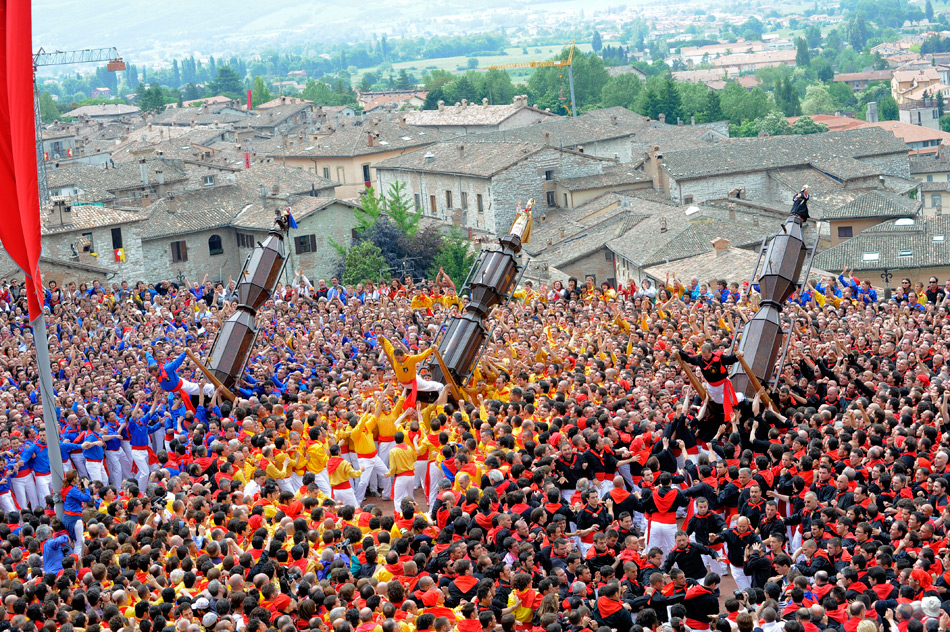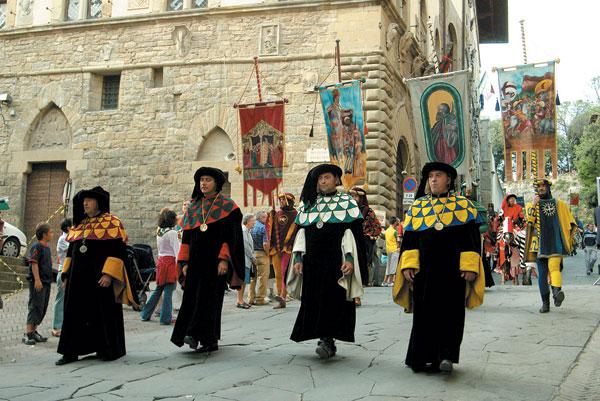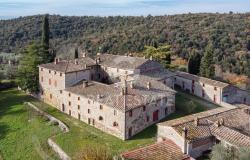Since living in Italy I have become obsessed with any type of medieval game – Palio, Giostra or Balestra. The minute I hear the thump, thump of the drums I hasten to the best vantage point to enjoy what have to be the most spectacular events in Italy.
Palio, Giostra and Balestra
Any competition where the winner is awarded a Palio (banner) is called a Palio and can be anything from a horse race to a music competition. A Giostra is a joust and a Balestra is a crossbow contest. In a Balestra the competitors prop their crossbows and aim for a bull the size of (you’ve guessed it) an apple, set some 200 metres away. The bolts whiz like bullets and you envision the damage they’d inflict on any enemy daring to besiege a castle. Most of these games have been popular for decades if not centuries and are spectacular re-enactments in authentic historical costume.
Many of these games first came to Europe when the Crusaders arriving in the Holy Land found that the Saracens were much more battle-ready that the Christian knights. The enemy kept up their skills by competing in tournaments and it’s from this beginning that many of today’s events have sprung.

The Honour of the Contrada
The first Palio I found was in a small village (Pietra Lunga – Umbria) where teams battled for their contrada (district) by hauling a cart uphill and into the square. The team captain then ran forward to chop a rope with an axe, releasing a guillotine and decapitating an unsuspecting watermelon. This event is based on an actual historical incident, where a Frenchman (hence the guillotine) miraculously escaped its fate. There was also an historic cortège of the town’s ‘nobles’ in home-made medieval costume.
In my first jousting tournament, (Badia Tedalda – Tuscany) a galloping horseman had to loop his lance through a ring. In succeeding rounds the ring became smaller and smaller. In blistering heat, heavily armoured knights and gowned officials processed before starting the joust. Local artisans sold their wares and a smithy pounded out the currency of the day, coins which you had to use for any purchases. The local ironmonger, potter, weaver and woodworkers showed remarkable skill in their trades.
Led by the mayoral couple, a second procession marked the end of the games. The local motor mechanic, his hairdresser girlfriend, the bank manager and his wife, maids, knaves and pages solemnly marched to the beat of a tambour marking the beginning of a grand feast.

Worth the Candle
The silliest and best fun has to be the Gubbio Ceri, in Umbria on March 15th. Three teams haul giant candlesticks around the main square and up a steep hill. The evening race is over in a matter of minutes and seems irrelevant, as the same team usually wins, but all day the people of Gubbio celebrate the madness of it all and the restaurants erupt with revellers and musicians.
Twice a year Arezzo, Tuscany, hosts the Saracen Games where 350 spectacularly dressed men parade through the town. Pre-booking for the event is a must (235 in the numbered seating but much less to stand with the unruly mob of supporters). Here the four contrade compete, each with a rider, charging full tilt at a wooden ‘Saracen’ whose left arm holds a shield (the target) and right arm three balls ready to smite the back of any rider not at full gallop. But first a spectacular display of flag waving is followed by an assembly of armoured knights and squires.
The joust begins and the skittish horses thunder down the course, riders lunge, the Saracen twirls, the audience gasp and the judges post the scores to an alternately enraged or enraptured crowd. In the arena, the combatants eye their rivals, encourage audience support or kneel to pray to the Madonna for the success of their colours. The judges scrutinise it all and watching over the entire proceedings is a cordon of Carabinieri. Suddenly a fight breaks out and if proof were needed that this is a genuinely heartfelt contest and not a tourist gig, here it is. Proceedings are halted while tempers cool and finally the last two runs establish the winner, the green and white contrada of Porta San Andrea, and the crowd erupts in cheers.

The Big One
But the Siena Palio beckons me. Banners, bandoleers, bravado, thronging crowds, plus elegant, bareback, beautiful horses. A less-than-handsome rider in green and orange stares down his rival. If brutish looks count for anything, then surely he will win. And they’re off, scrambling around a bastion, up the rise by the fountain and down again to the bottom of the square. A rider falls and is discarded like a rag doll, the race turns, swerves, a final lunge and big nose has won, his ugly face beaming with pride He is held high above the crowd. I see it all so clearly - from my lounge! It’s a nationwide live televised event. I’ll never see it this close for real, but next year I will be at the Siena Palio, come hell or high horses.
If you too like Italian medieval pageants do not miss our Summer Palios Around Italy: Your Month by Month Guide













